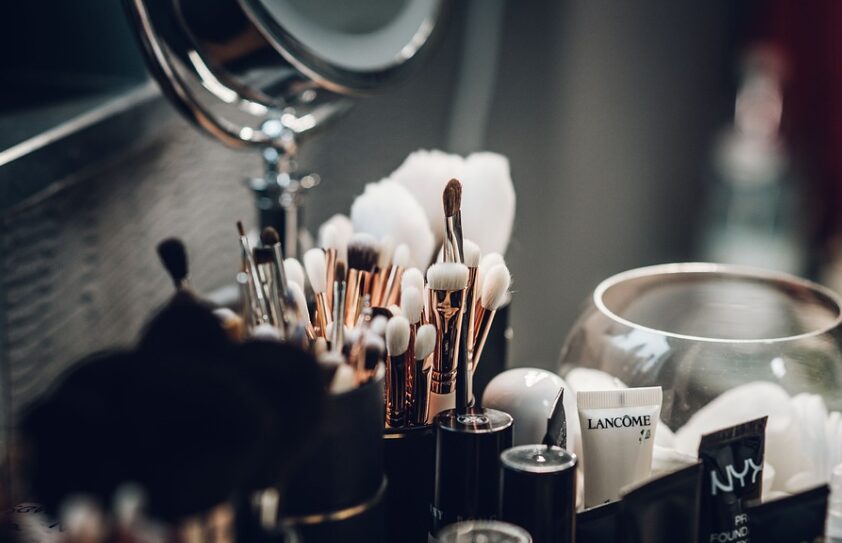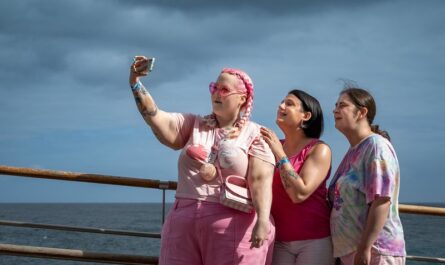Over the past decade, the fashion industry has undergone a significant transformation. What was once dominated by narrow beauty ideals and uniform body standards is now evolving into a more inclusive and diverse space. This shift reflects broader societal changes and a growing demand from consumers for brands that celebrate all shapes, sizes, ethnicities, and identities. In this article, we explore the factors driving this change, the initiatives that are making a difference, and what the future holds for body inclusivity in fashion.
1. The Evolution of Beauty Standards in Fashion
A Historical Perspective
Historically, the fashion industry promoted a singular, often unattainable standard of beauty. Editorials, runway shows, and advertising campaigns largely featured models with very specific body types, typically thin and tall. This narrow representation contributed to unrealistic beauty ideals that many consumers struggled to relate to, often fueling body image issues and a sense of exclusion.
Changing Consumer Demographics and Attitudes
Today’s consumers are more informed and vocal about the need for representation. Social media platforms and online communities have democratized fashion, allowing a broader range of voices to challenge traditional norms. Consumers now demand to see themselves reflected in the brands they support, and they are quick to champion those that embrace diversity. As a result, many fashion houses and retailers have begun to re-examine their practices and adopt more inclusive strategies.
2. Key Drivers of Inclusivity and Diversity
Consumer Activism and Social Media Influence
The rise of social media has been a game-changer. Platforms like Instagram, TikTok, and Twitter empower individuals to share their experiences and call out brands that fail to reflect real-world diversity. Hashtags such as #BodyPositivity and #DiversityInFashion have mobilized communities, pressuring brands to broaden their representation both on and off the runway. This digital activism has made it clear that modern consumers want to see a realistic portrayal of beauty—one that encompasses a wide array of body shapes, sizes, ages, and ethnic backgrounds.
Changing Cultural Norms and Greater Awareness
As society becomes more aware of issues related to body image, mental health, and self-esteem, there is a growing push for positive representation. The conversation has shifted from merely fitting into a mold to celebrating individuality and self-expression. This cultural shift is influencing everything from fashion magazine covers to the hiring practices of modeling agencies. Designers are now more mindful of the social impact their collections have, and many actively seek to incorporate diverse models and design pieces that cater to a broader audience.
Economic Incentives
Diversity in fashion isn’t just a moral or social imperative—it also makes good business sense. Brands that embrace inclusivity can tap into a larger market. When consumers feel seen and valued, their loyalty increases, and word-of-mouth marketing thrives. As studies show that diverse representation can boost a brand’s image and financial performance, more companies are investing in inclusive marketing campaigns, broader size ranges, and more diverse runway casts.
3. Initiatives and Innovations in the Industry
Inclusive Runway Shows and Campaigns
A number of high-profile fashion brands have made headlines for their inclusive runway shows. Designers like Christian Siriano, Chromat, and Savage X Fenty have redefined runway standards by featuring models of all sizes, ages, genders, and ethnicities. These shows not only challenge traditional aesthetics but also set a new precedent for what is considered beautiful.
For instance, Savage X Fenty, Rihanna’s lingerie brand, has been celebrated for its inclusive casting and diverse representation. Their fashion shows are a blend of high-energy performance, bold design, and genuine celebration of diverse bodies—demonstrating that inclusivity can be both commercially successful and culturally transformative.
Expanding Size Ranges and Adaptive Clothing
Many brands are expanding their size ranges and developing adaptive clothing that caters to people with disabilities. This move is part of a larger trend toward accessibility, ensuring that fashion is available and flattering for everyone. Retailers like ASOS, H&M, and Nordstrom are increasingly offering extended size options, while designers are experimenting with adaptive features such as adjustable closures and ergonomic cuts.
Diverse Modeling Agencies and Representation
The modeling industry itself is evolving. Agencies are now actively recruiting models who reflect the diversity of real populations. This shift is encouraging a broader spectrum of representation in fashion editorials, advertisements, and runway shows. With models of various sizes, ages, and ethnic backgrounds finally getting the spotlight, the industry is moving toward a more authentic representation of beauty.
Technological Innovations and Digital Representation
Technology is playing a crucial role in democratizing fashion. Virtual fitting rooms, 3D body scanning, and augmented reality (AR) applications allow consumers to see how garments will look on their own bodies, breaking down the barriers created by traditional sizing systems. Additionally, digital fashion shows and online campaigns make diverse collections accessible to a global audience, further promoting inclusivity.
4. Challenges and Ongoing Debates
Balancing Creativity with Commercial Success
While many brands are making strides toward inclusivity, challenges remain. Some critics argue that diversity can sometimes be used as a marketing gimmick, rather than being integrated into the brand’s core values. Authenticity is key; consumers are quick to spot when inclusivity is not genuinely embraced but rather superficially applied.
Industry Resistance and Slow Adaptation
The fashion industry has a long history of entrenched norms, and change can be slow. Some traditional brands still cling to conventional standards, citing concerns about design, brand identity, or market demand. However, as consumer preferences continue to evolve, even these legacy brands are beginning to recognize that inclusivity is not just a trend—it’s a necessity for long-term relevance.
Global Differences and Cultural Sensitivities
Inclusivity in fashion varies significantly around the world. What is considered diverse and inclusive in one cultural context might differ in another. Global brands face the challenge of adapting their strategies to fit different markets while maintaining a consistent message of inclusivity and diversity.
5. The Impact on Consumers and Society
Empowerment and Self-Esteem
For consumers, seeing a range of body types and identities represented in fashion can have a profound impact on self-esteem and body image. When people see themselves reflected in the media, it validates their existence and promotes a healthier, more positive self-image. This empowerment can lead to increased confidence, improved mental health, and greater overall well-being.
Social and Cultural Shifts
The push for diversity in fashion is contributing to broader social change. As diverse representations become normalized, societal standards of beauty are expanding to embrace a wider array of forms. This cultural evolution can help combat issues like body shaming, discrimination, and unrealistic beauty expectations that have long plagued the industry.
Economic Benefits
Inclusive practices in fashion are also driving economic growth. Brands that embrace diversity can access a larger customer base and tap into emerging markets that were previously underserved. Moreover, a commitment to inclusivity fosters loyalty and brand trust, leading to sustainable business success in an increasingly competitive marketplace.
6. Looking to the Future: The Next Wave of Inclusivity
Emerging Trends and Innovations
The future of fashion inclusivity is bright. As more designers and brands commit to diversity, we can expect to see:
- Greater Emphasis on Adaptive Fashion: More brands will develop clothing that caters to all abilities, making fashion truly universal.
- Customization and Personalization: Advances in technology will allow consumers to customize garments to their exact measurements and preferences, further breaking down traditional size constraints.
- Inclusive Marketing Campaigns: Future advertising will continue to evolve, with brands using diverse models and real-life stories to connect authentically with their audiences.
- Global Collaboration: As the industry becomes more interconnected, international collaborations will drive innovative approaches to inclusivity that respect and celebrate cultural differences.
The Role of Education and Advocacy
Ongoing education and advocacy are essential for sustaining progress in inclusivity. Fashion schools, industry associations, and media outlets all have a role to play in promoting the values of diversity and inclusion. By fostering a new generation of designers who prioritize inclusivity, the industry can continue to evolve and adapt to changing societal norms.
7. Conclusion: A New Era of Fashion
The shift toward body inclusivity and diversity in the fashion industry represents a significant cultural transformation. It’s an evolution that not only redefines beauty standards but also empowers consumers, drives economic growth, and contributes to a more equitable society. By challenging traditional norms and embracing a broader spectrum of identities, the fashion industry is setting the stage for a future where everyone feels seen, valued, and celebrated.
As brands continue to innovate and push the boundaries of design, the impact of inclusivity will be felt far beyond the runway. It will influence consumer behavior, reshape marketing strategies, and inspire social change. The journey toward true inclusivity is ongoing, but with each step, the industry moves closer to a world where fashion is a true reflection of the diverse, vibrant society we live in.
In this new era of fashion, beauty is no longer defined by a narrow set of standards but by the richness of diversity and the celebration of individuality. The future of fashion is inclusive, and it’s a future where everyone has the opportunity to shine—inside and out.



